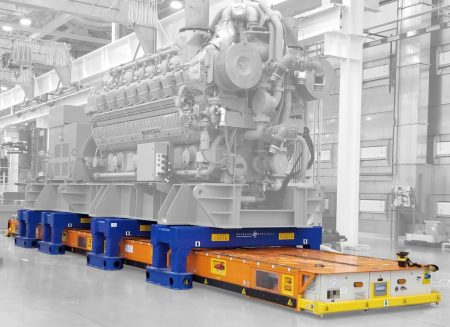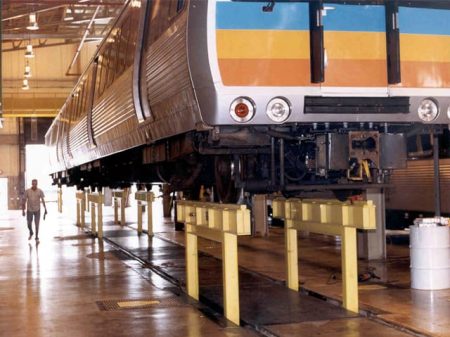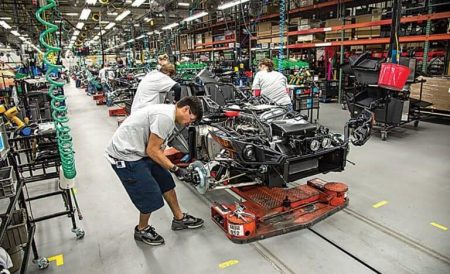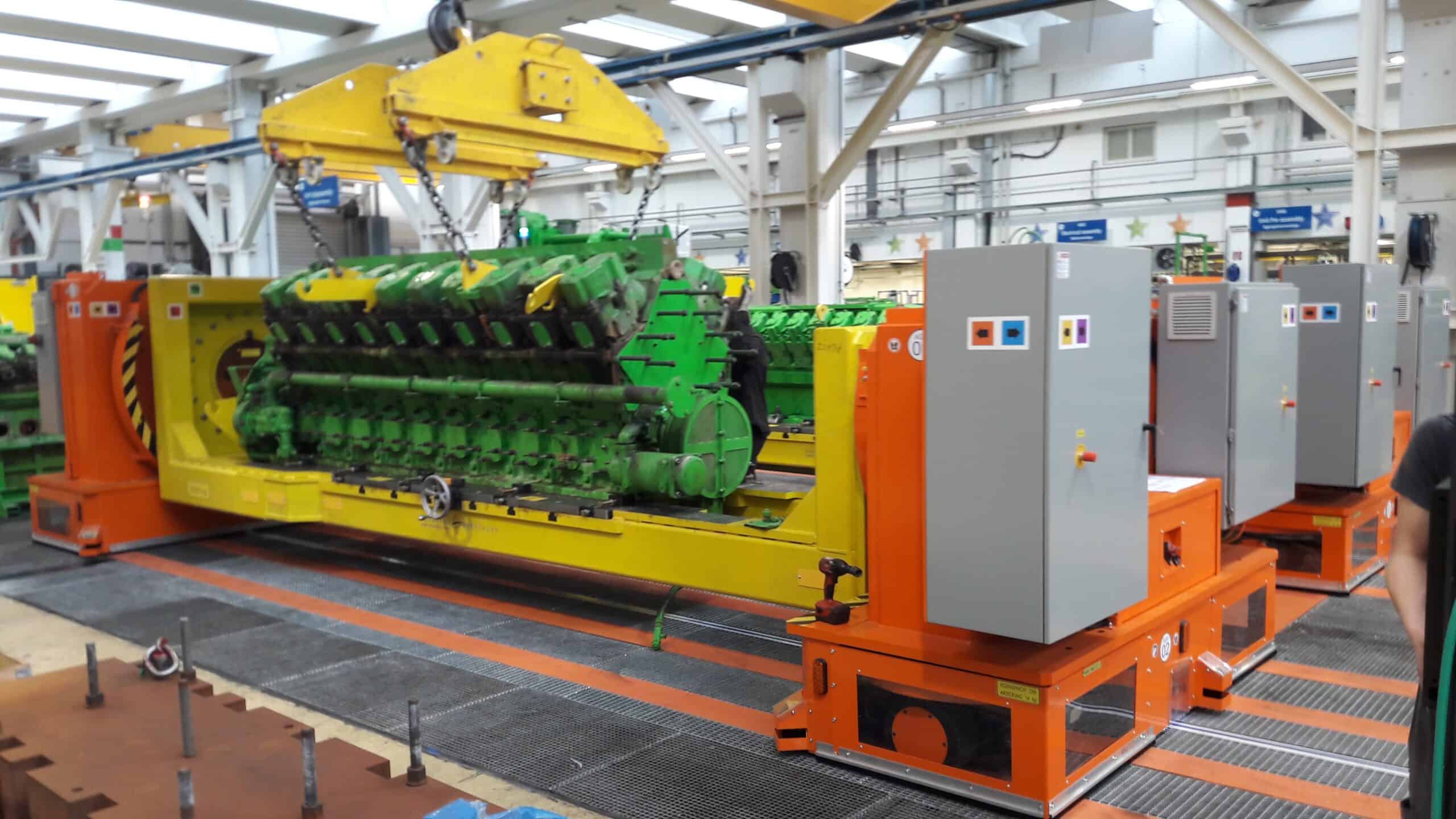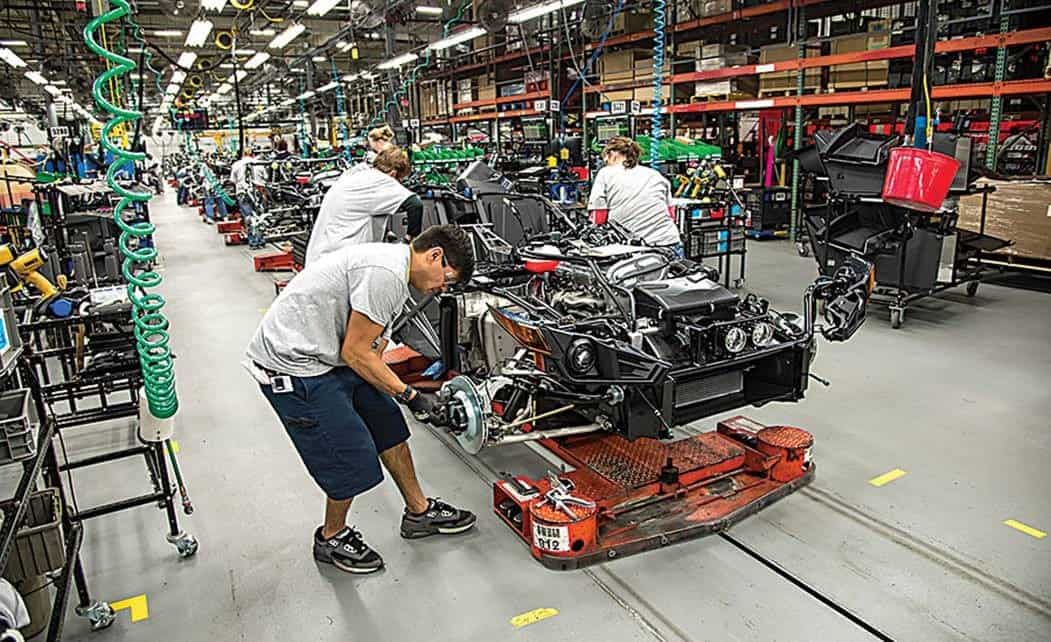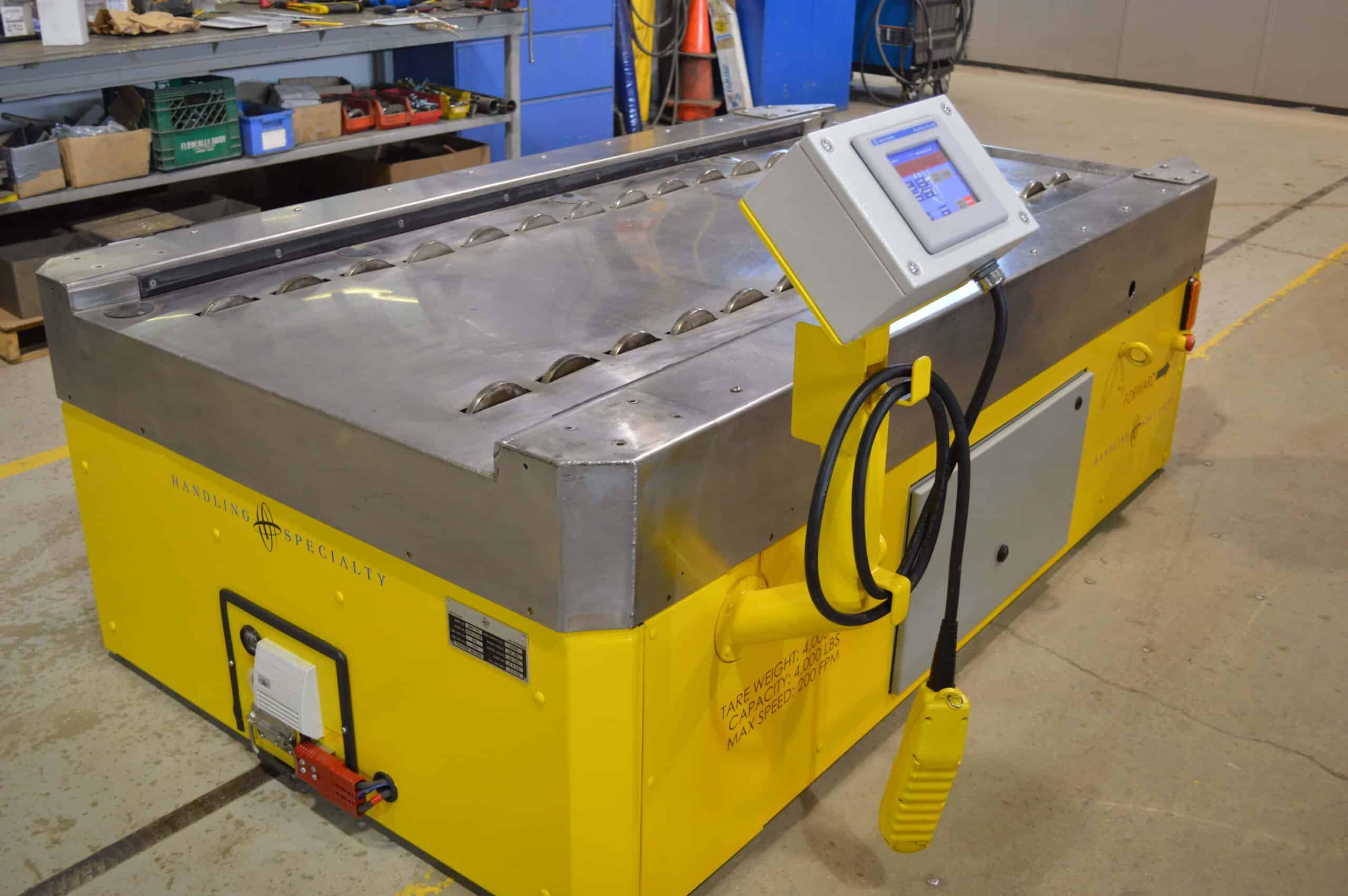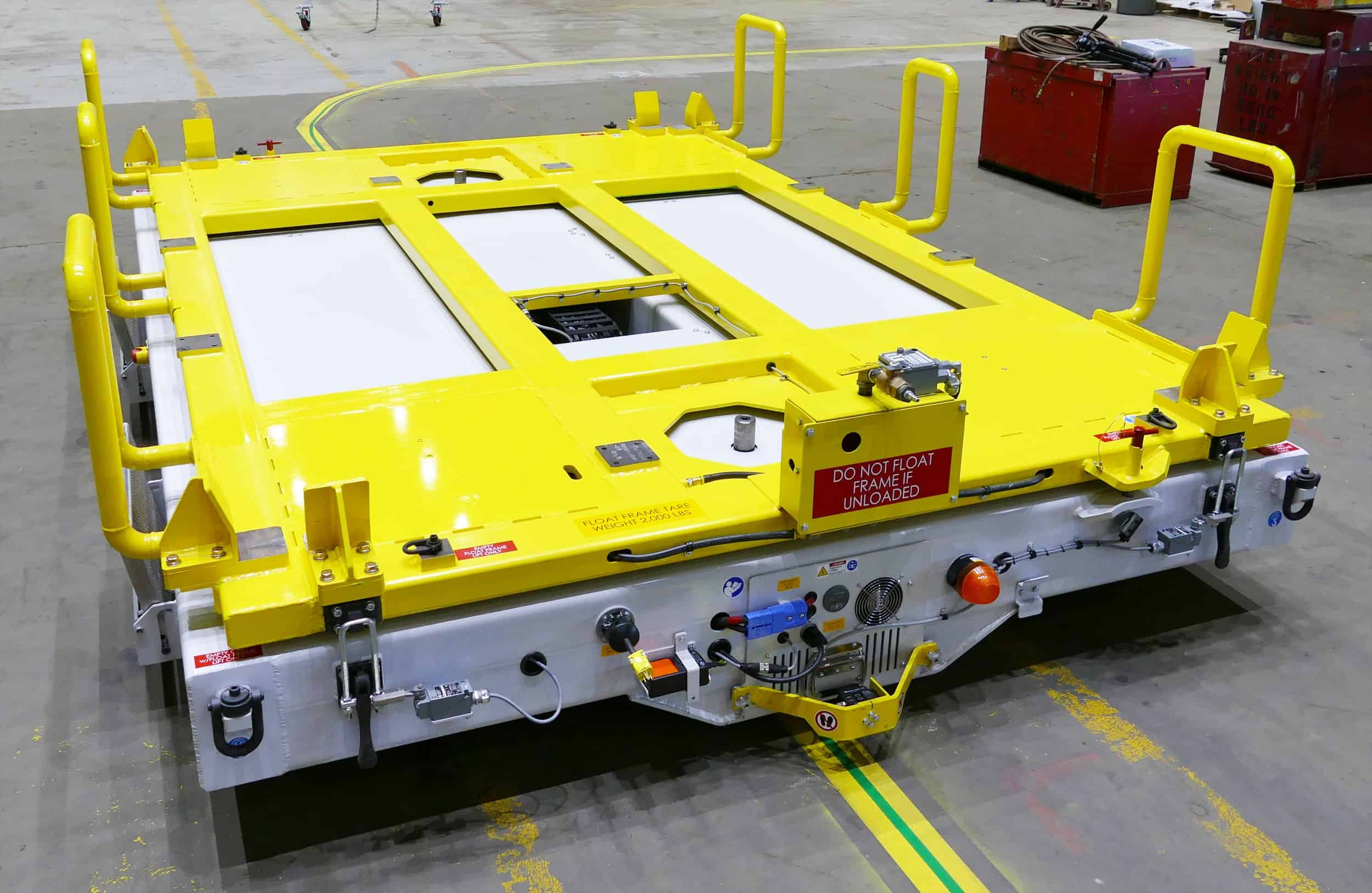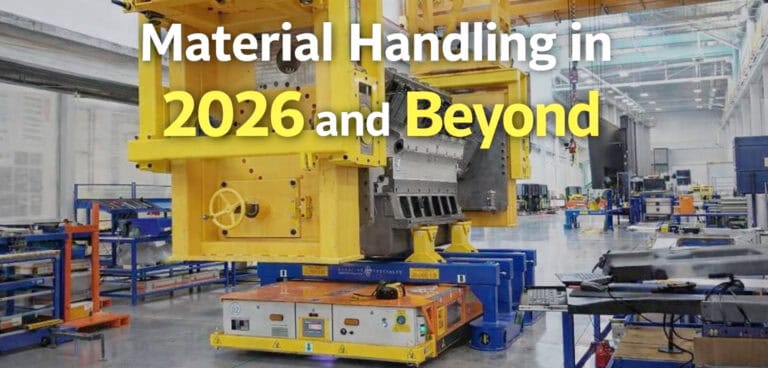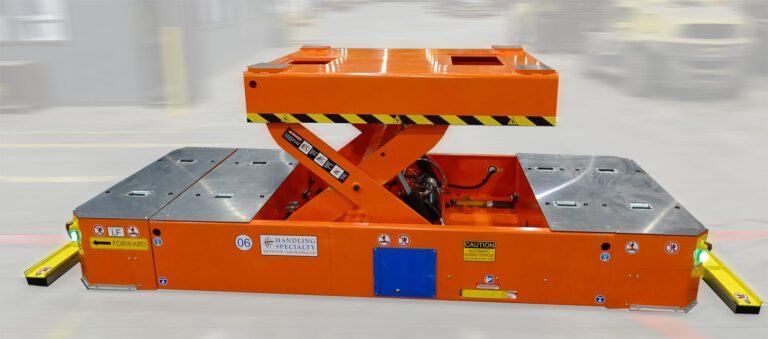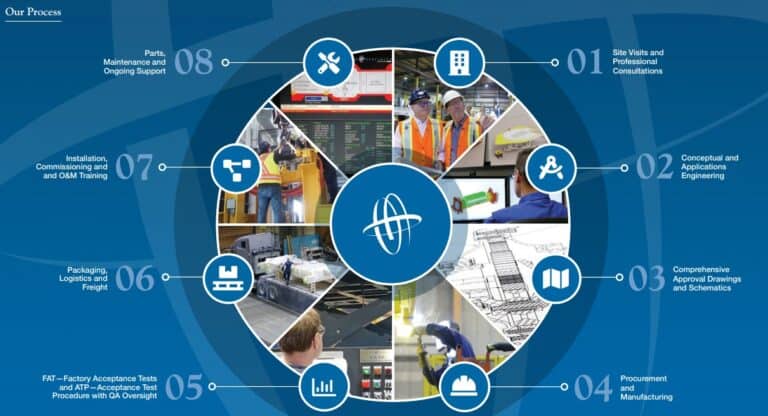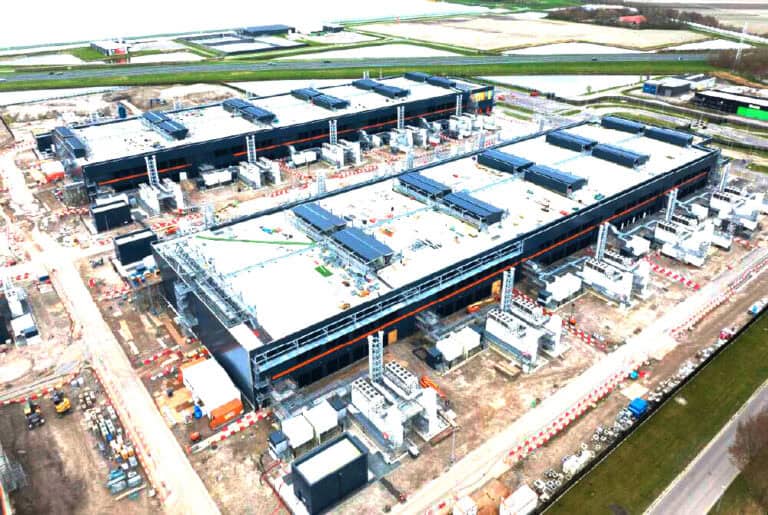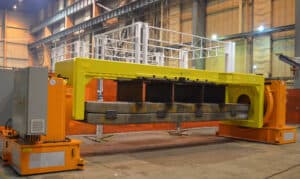Introduction
We are now in the age of smart factories, where automation is critical. A big part of this change is automated guided vehicles (AGVs)—unmanned vehicles that change how materials are moved through assembly and maintenance repair operation (MRO) processes. They help make factories more efficient and productive. This blog will look at the basics of AGVs, how they have changed over time, how they affect industrial operations, and why they are vital in creating future smart factories.

Exploring the Basics of Automated Guided Vehicles (AGVs)
Automated Guided Vehicles, or AGVs, use advanced navigation systems, like laser guidance, sensors, and cameras, to move through complex environments. These robots avoid obstacles and boost operational efficiency. AGVs are essential for lowering labour costs and improving energy efficiency while keeping safety at the forefront of industrial operations. They are great at repetitive tasks and fit well into production lines and manufacturing processes. With their advanced technologies, AGVs are transforming the manufacturing industry through automation and new ideas.
The Definition and Core Functions of AGVs
Automated Guided Vehicles are autonomous vehicles that move along specific paths in a predetermined area of an assembly or MRO facility. They are used mainly for transporting and positioning materials in factories, moving them through specific processes. Their main job is to help with manual handling and speeding up the assembly and MRO processes while improving operational efficiency.
AGVs move independently using advanced technology such as sensors, software, and motors. These aspects of the AGV work together to keep the vehicle on its planned path, which helps materials move quickly in the factory. AGVs follow set instructions and use sensors, which allows them to do tasks accurately many times. This makes them perfect for places where consistency and precision are essential.
A Brief History and Evolution of AGV Technology
The story of AGV technology goes back to the middle of the 20th century. The first AGVs were basic. They used simple systems, like underground or overhead wires, to pull the AGV with a load and find their way. Over the years, AGVs have changed a lot.
As technology grew, AGVs became better. More advanced navigation systems, like laser guidance and vision systems, helped them accurately move through more complex environments. With computer-controlled systems, AGVs could also plan and do tasks more carefully. Additional custom tooling, like scissor lifts, rotators, turn tables, and other mounted technologies, have improved AGVs in recent years. These advanced technologies make AGVs more flexible in positioning their loads in work cells for added ergonomics and safety. This change has made AGVs very important in today’s manufacturing processes.
Different Types of AGVs in Modern Manufacturing
Various specialized AGVs are now available to support the different needs of today’s manufacturing and warehousing operations. Each type is designed to tackle specific material handling issues. Knowing the strengths and best uses of each AGV type is essential. This can help improve material flow and boost efficiency in various industrial environments.
Specialized AGVs for Custom Applications
The flexibility of AGV technology comes through in the many custom applications. There is an increasing need for heavy-duty AGVs designed to fit the unique needs of different industries and their work processes. These AGVs often have specific features and functions that work well in these complex environments.
For example, in the energy industry, AGVs can have an increased lifting capacity to account for the heavy engines and turbines they move through work cells. Heavy-duty AGVs transport intricate parts through the assembly line in the aerospace field. This ability to adapt makes AGVs a valuable tool in the manufacturing industry, making tasks that were once seen as too complicated to automate easier.
AGV Navigation Technologies: How They Find Their Way
AGVs use advanced navigation systems to help them find their way in factories. These systems are like the eyes and brains of AGVs. They help them see what is around them and make decisions using up-to-date information. This allows AGVs to move independently and safely work near human workers. Different models of AGVs use different navigation systems. Each one has its own benefits and best uses.
Laser-Based Navigation Systems and Their Precision
Among the most common navigation systems for AGVs are laser guidance systems. These systems use advanced sensors to send out laser beams and measure how long the reflected signal takes to return. By looking at the time difference, the system can determine how far away objects are and create a map of the area in real time.
The advanced sensors help AGVs spot obstacles, such as walls, equipment, or human operators. The information gathered goes into the AGV’s control system, which uses smart algorithms for obstacle avoidance and path planning. Because of this, AGVs with laser guidance can move through busy and challenging places without losing safety or efficiency.
Magnetic guide paths are another popular navigation method used in Automated Guided Vehicles (AGVs). This method involves putting magnetic tape on the factory floor along routes for the AGV to follow. These magnetic markers create visible tracks for the AGV to move along. Sensors on the bottom of the AGV detect the magnetic field produced by these markers, helping the vehicle stay on the right path.
Magnetic guide paths are an innovative and cost-effective choice for many industrial uses. However, they are less flexible than more advanced navigation systems, like laser guidance. Still, this technology is common, and the magnetic tape can be easily removed and rerun to alter the AGV’s path.
GPS and Other Emerging Navigation Technologies
AGV navigation is also seeing new and exciting changes as technology moves forward. Methods like laser guidance and magnetic guide paths are still in use, but newer solutions are constantly emerging. One such change is the use of GPS for AGV navigation. While GPS has usually been for outdoor use, it is now being added to AGVs, especially in bigger places or outdoor settings like container terminals.
Other advanced navigation systems being considered for AGV use include vision-based navigation, which uses cameras and computer vision to understand its surroundings. There’s also natural navigation, which combines different sensors to make a moving map of the area without needing set paths. These new features are pushed by the demand for more flexibility, better adaptability, and the ability to make quick decisions in AGV systems. Using real-time data exchange with other systems and AI-driven path optimization makes AGVs work even better and more efficiently.
Integrating AGVs into Smart Factory Ecosystems
The real power of AGVs goes much further than what they can do alone. Working together in smart factories, using connected systems, and sharing data can significantly improve efficiency and boost productivity. Handling Specialty is a leader in designing and building turnkey material handling solutions that work in tandem for assembly and MRO lines.
The Synergy Between AGVs and the Industrial Internet of Things (IIoT)
Automated Guided Vehicles (AGVs) work well with the Industrial Internet of Things (IIoT) to change how we handle materials in smart factories. They use automation appropriately so AGVs can move through complex environments quickly, effectively position products in work cells, and boost operational efficiency. The link between AGVs and IIoT helps improve production processes. It can lower labour costs and improve overall efficiency by proactively using real-time data and past insights to alert a factory of component issues. This teamwork boosts the speed of manufacturing operations. It ensures better communication and simplifies production systems, increasing productivity and cost savings.
The Impact of AGVs on Factory Safety Standards
The use of AGVs in factories helps improve efficiency and safety. These machines do jobs that used to be done by human operators, reducing the chances of accidents at work and helping create a safer environment for everyone in the factory.
Implementing AGV Safety Features and Protocols
AGV manufacturers understand safety. They design modern AGVs with many safety features to protect human workers who work near these self-operating vehicles. These safety measures help reduce risks, protect products, and avoid accidents.
A key safety feature in most AGVs is their ability to detect and avoid obstacles. They use sensors like laser scanners, ultrasonic sensors, or 3D cameras to find objects in their way. These sensors constantly check the area around them. As soon as they detect an obstacle, the AGV’s control system is quickly alerted.
Depending on its programming and how severe the obstruction is, the AGV can slow down, stop completely, or change its path to prevent a crash. Additionally, emergency stop buttons are located on AGVs. Human workers nearby can press these buttons to stop the vehicle immediately if they see any danger. To make safety even better, AGVs have visual and sound alarm systems. Flashing lights, warning noises, or voice alerts can warn human workers about the AGV’s movements, especially near corners or switching lanes.
Practical Applications of AGVs Across Industries
AGVs started in manufacturing, but they are now used in many industries in recent years. This shows how flexible AGVs are and their benefits to various operations.
Revolutionizing Manufacturing with AGVs
Heavy-duty AGVs have become very important in today’s manufacturing and MRO operations. They are key in many parts of the production process. They move raw materials and products through the assembly line and transport finished goods. AGVs work non-stop, and they are precise and reliable. This makes them vital tools in any manufacturing plant that wants to improve material handling.
One significant change AGVs are bringing to manufacturing is automation in production lines. When factories use AGVs on assembly lines, materials flow smoothly between workstations. This speeds up production and lessens errors and delays from doing things manually. AGVs work well in just-in-time (JIT) manufacturing, where getting a product delivered to a work cell accurately and on time is crucial. This helps keep production lines running without expensive stops. These efficiency gains are significant for today’s competitive manufacturers.
The Economic and Operational Benefits of AGVs
AGV systems can provide a great return on investment. They can improve many parts of industrial operations, lower costs, and increase overall productivity.
Cutting Operational Costs with Efficient AGV Systems
Using AGV systems can help businesses lower their operational costs in many ways, such as automating tasks that people usually do. This means companies can save money on things like wages, benefits, and training. Since AGVs need little human help, companies can run with smaller teams, allowing them to focus their workers on more important jobs.
AGVs also help save costs by reducing mistakes and lowering waste. Additionally, using AGVs makes transport safer for products, meaning less damage. Many new AGVs are made to use less energy. They have energy-efficient batteries and are designed to manage power well. This means AGVs use less energy than older material-handling equipment.
Boosting Productivity and Efficiency Through Automation
AGVs are great tools for improving factory productivity, increasing output and creating a smoother workflow. One significant benefit of heavy-duty AGVs is that they improve how materials move and are positioned on the assembly line.
These autonomous mobile robots work all day and night without needing breaks outside of recharging. In this case, extra AGVs should be purchased to replace a charging unit. They move materials between production lines, storage areas, and shipping zones. This stops delays caused by humans moving materials, leading to faster production. Also, by handling tedious and demanding jobs, AGVs let human workers do more interesting and important tasks. This change boosts worker operational efficiency and helps businesses use their people better. As a result, employees can focus on more challenging and specialized work.
AGVs and Their Role in Sustainable Manufacturing Practices
With more people understanding the impact on the environment, sustainable manufacturing has become very important for many businesses. In this context, AGVs are vital in helping make manufacturing practices more eco-friendly. They help improve processes, reduce waste, and use less energy, supporting a cleaner and more sustainable manufacturing environment.
AGVs help energy efficiency by using better movement patterns. Traditional material handling usually depends on human-driven forklifts or manual carts. This method is not very efficient and doesn’t always save energy. In contrast, AGVs are designed to take the best routes and use energy-efficient batteries and regenerative braking, which wastes much less power. This lower energy use leads to fewer operational costs and helps support larger green initiatives by reducing the carbon footprint in manufacturing operations.
Conclusion
In conclusion, Automated Guided Vehicles (AGVs) are changing how smart factories operate. They help make tasks easier, improve efficiency, and raise safety levels. AGVs are changing how manufacturing is done and pushing for sustainable options. AGVs are for moving and positioning things, boosting productivity, and cutting operational costs. As industries change, AGVs become more and more essential for smooth automation and strong logistics. Using AGVs is not just a new idea; it is a smart choice for a better and more competitive future in manufacturing.
Are you looking for a quote on including an AGV system in your assembly or MRO facility? Talk to one of our Technical Sales people today.
Frequently Asked Questions
What Makes AGVs an Essential Part of Smart Factories?
AGVs are important for improving how materials move and are positioned and how things work well in smart factories. They can run efficiently in complex environments. They work well with collaborative material handling equipment and human operators. This makes them essential for creating the solid connections and automation key to a smart factory.
How Do AGVs Interact with Other Factory Automation Systems?
Seamless communication with current automation systems is vital for AGV operation in today’s factories. This helps when they connect with IIoT devices, enabling real-time data exchange. As a result, AGVs work with other systems supplied by Handling Specialty, such as assembly, MRO, and manufacturing systems.
AGV customization is very important for this technology. With its modular design and advanced technologies, AGVs can be changed to fit the needs of different industries. This helps businesses by providing valuable insights that can improve their management systems.

